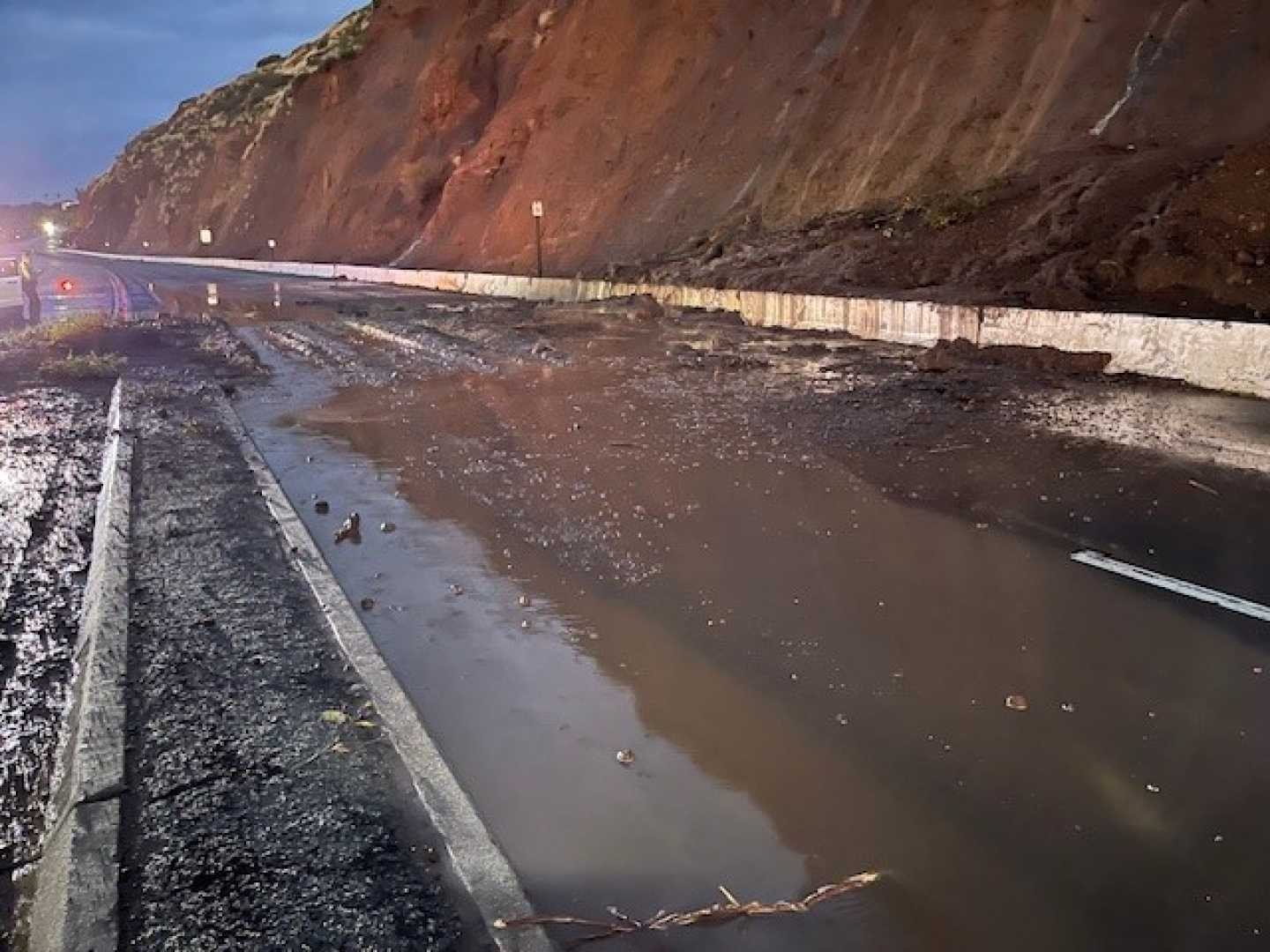News
Mudslides and Severe Flooding Shut Down Pacific Coast Highway

MALIBU, Calif. (AP) — Heavy rain unleashed devastating mudslides and flooding on Pacific Coast Highway (PCH) Thursday, prompting an indefinite closure between Santa Monica and Malibu. The storm, part of an atmospheric river, resulted in swift debris flows following the region’s recent firestorms.
According to Erik Scott, a spokesperson for the Los Angeles Fire Department (LAFD), around 5 p.m. Thursday, an LAFD vehicle was swept off the roadway near Big Rock Drive and into the ocean due to a debris flow. Fortunately, the firefighter was able to escape the vehicle and was later treated for minor injuries at a local hospital.
“We ask all residents to avoid driving during the peak of the storm and to exercise extreme caution,” Scott said.
The California Department of Transportation reported ongoing debris flows beginning around 1:30 p.m. and escalating into the evening as rain intensified. A flash flood alert was issued by the National Weather Service for areas including Pacific Palisades at approximately 4 p.m. The agency warned of a high risk for life-threatening debris flows, particularly in burn scar areas.
“Mud, rock, and debris flows will have the potential to impact drainages, roads, and residences in and directly below the burn area,” the weather service stated.
Heavy debris flows were documented near Duke’s Malibu restaurant on PCH. While the establishment managed to withstand the fire damage, it experienced significant flooding during the rainstorm. Caltrans crews worked tirelessly with heavy machinery to clear the highway.
In addition to the devastation along PCH, other areas across Los Angeles County faced flooding and mudslides, notably in the Eaton fire burn area in Altadena, Mulholland Drive, and Outpost Drive in the Hollywood Hills.
Burned hillsides became especially susceptible to landslides during the intense rainfall because their soil lacks stability from vegetation. Areas previously affected by wildfires are further disadvantaged by the soil’s reduced capacity to absorb water due to heat exposure.
“Debris flows can be triggered when rainfall rates exceed 0.5 inches per hour. On Thursday, rain rates measured between 0.75 to 1.25 inches per hour,” a weather service representative stated.
By late evening, as rescue crews attempted to locate the overturned LAFD vehicle in the ocean, it remained partially submerged behind the surf. Emergency services used video footage to identify the specific location for retrieval efforts. Eric Scott later confirmed, “Fortunately, the member was able to exit his vehicle and reach safety.”
The city of Malibu faced mandatory evacuation orders affecting around 20,000 residents due to anticipated mudslides, with an additional 5,000 individuals under evacuation warnings. All schools in Malibu were closed on Friday as a precaution.
Los Angeles Mayor Karen Bass outlined the city’s storm preparedness measures, which included clearing debris from catch basins and providing over 6,500 sandbags to residents. The sheriff’s office also assisted residents with sandbags and safety advice regarding mud and debris.
“We’ve seen numerous instances where people were caught in fast-moving water, and we want to prevent those situations,” Sheriff Robert Luna emphasized during a news conference. He warned residents, “Nothing back home is worth your life. If you decide to stay in an evacuated area, please be aware that storm debris may block evacuation routes.”
As the storm moved southward, it caused similar flooding and severe weather in parts of Northern California, affecting the San Francisco Bay area.












